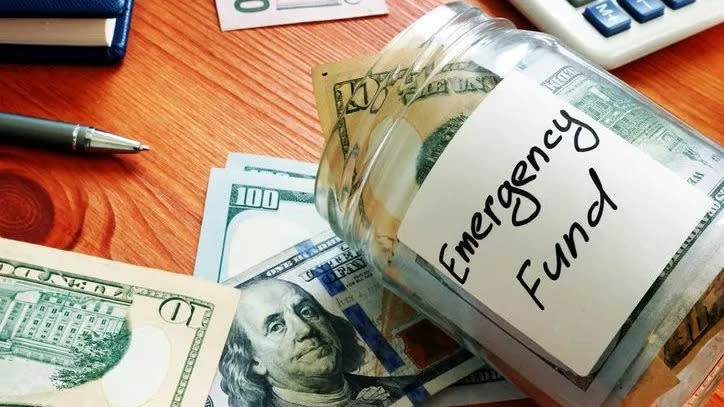How to Invest Your Emergency Fund for Liquidity
An emergency fund is essential for maintaining financial stability, offering a safety net for unforeseen expenses like medical bills, job loss or urgent home repairs. However, many people wonder if they can do more with their emergency fund than have it sit in a low-interest savings account. If you’re looking to invest emergency funds while maintaining liquidity, there are several options you may consider that can allow your money to grow without sacrificing its accessibility. Since your emergency fund needs to be available at a moment’s notice, liquidity is key.
Consider working with a financial advisor if you need help investing your money or building a financial plan.
Why Is it Important to Have an Emergency Fund?
An emergency fund is a dedicated reserve of money specifically set aside to handle unexpected financial challenges. Its purpose is to act as a financial buffer, ensuring that you don’t have to rely on credit cards, loans, or dipping into long-term savings when unplanned expenses arise. This reserve helps protect your financial health and prevents you from dipping into retirement savings or other long-term investments in times of crisis.
Without an emergency fund, individuals can find themselves scrambling for cash, potentially taking on high-interest debt or selling off investments at a loss. Instead, an emergency fund provides a sense of security and stability, ensuring that unexpected expenses do not derail your financial plans.
Ideally, your emergency fund should be kept in an easily accessible account or investment vehicle, so you can use it quickly when needed. Liquidity is an important consideration because emergencies often arise without warning.
How to Invest Your Emergency Fund for Liquidity

If you want to invest emergency funds while maintaining liquidity, it’s important to choose options that allow you to access your money quickly without penalties. These are some safe and liquid options for investing in your emergency fund.
High-yield savings accounts: High-yield savings accounts offer better interest rates than traditional savings accounts while still providing immediate access to your funds. Many online banks offer these accounts with no fees and no minimum balance requirements, making them an attractive option for emergency funds.
Money market accounts: Money market accounts combine savings and checking features, offering relatively higher interest rates with check-writing and debit card access. This makes them both liquid and slightly more profitable than regular savings accounts while still keeping your funds secure.
Certificates of deposit (CDs): CDs with short-term maturities, such as three or six months, can provide slightly higher interest rates than savings accounts while keeping your funds relatively accessible. However, be cautious about early withdrawal penalties, and consider laddering your CDs to keep some of your money liquid at all times.
Treasury bills: Treasury bills or T-bills are government-backed securities with short-term maturities ranging from a few weeks to a year. They are highly liquid and can be easily sold before maturity if you need quick access to your money. T-bills offer a safe and low-risk investment option for your emergency fund.
Investment-grade bonds or bond funds: For those seeking slightly higher returns, investment-grade bonds or bond funds are options that provide regular interest payments while maintaining liquidity. These bonds are relatively safe and can be sold in the market when needed, though they may carry some risk if interest rates fluctuate.
How Much Should You Have in an Emergency Fund?
Conventional wisdom dictates having three to six months’ worth of living expenses saved in an emergency fund. This ensures you have enough to cover basic expenses, such as rent or mortgage payments, utilities, groceries and transportation, in case of income loss or other emergencies. For those with more variable income, including freelancers or small business owners, it may be wise to save between six months’ and a year’s worth of expenses.
The exact amount you need will depend on your personal circumstances, including your job security, household size and monthly expenses. Ultimately, the goal is to have enough savings to cover your essentials without the stress of figuring out how to manage during a financial crisis.
Common Mistakes to Avoid With Your Emergency Fund
While an emergency fund can serve as the foundation of your financial life, there are some common mistakes people make that can undermine its effectiveness. Avoid these pitfalls to ensure your fund is ready when you need it most.
An inaccessible account: Some people make the mistake of stashing their emergency fund in accounts that are not easily accessible, such as long-term investments or retirement accounts. The purpose of an emergency fund is to have liquid cash available when you need it, so it should be kept in an account that allows for quick access without penalties or delays.
Not saving enough: Underestimating how much you need in your emergency fund can leave you vulnerable during a crisis. If you do not have enough to cover several months of expenses, you may find yourself short when an emergency strikes. Reassess your savings goal regularly and adjust it as your financial situation changes.
Non-emergencies: It is tempting to dip into your emergency fund for things that are not true emergencies, like vacations or luxury purchases. However, this can deplete your savings and leave you without a safety net when an actual emergency occurs. Keep your fund reserved strictly for urgent, unforeseen expenses.
Too large of a fund: While it’s important to have enough in your emergency fund, keeping too much cash in a low-interest account can mean missed investment opportunities. Once your fund reaches the recommended amount, consider investing any excess savings in higher-growth options.
Neglecting to rebuild: After using your emergency fund, it’s important to prioritize rebuilding it. Failing to replenish the account leaves you vulnerable to future emergencies. Make a plan to start rebuilding as soon as possible to restore your financial security.
Bottom Line

Investing your emergency fund while keeping it liquid is a smart way to grow your savings without sacrificing accessibility. Whether you choose high-yield savings accounts, money market accounts or short-term investments like Treasury bills, the key is to balance earning potential with liquidity. By avoiding common mistakes and selecting the right investment vehicles, you can ensure that your emergency fund is always ready when you need it, providing peace of mind and financial security.
Asset Allocation Tips
SmartAsset’s asset allocation calculator can help you determine how to split your money between stocks, bonds and cash. The recommendation is based on your risk tolerance, which can range from very conservative to very aggressive.
A financial advisor can help you build a portfolio of investments that’s designed with your risk tolerance and financial goals in mind. Finding a financial advisor doesn’t have to be hard. SmartAsset’s free tool matches you with up to three vetted financial advisors who serve your area, and you can have a free introductory call with your advisor matches to decide which one you feel is right for you. If you’re ready to find an advisor who can help you achieve your financial goals, get started now.
Photo credit: ©iStock.com/jeffbergen, ©iStock.com/designer491, ©iStock.com/AsiaVision
The post How to Invest Your Emergency Fund for Liquidity appeared first on SmartReads by SmartAsset.
